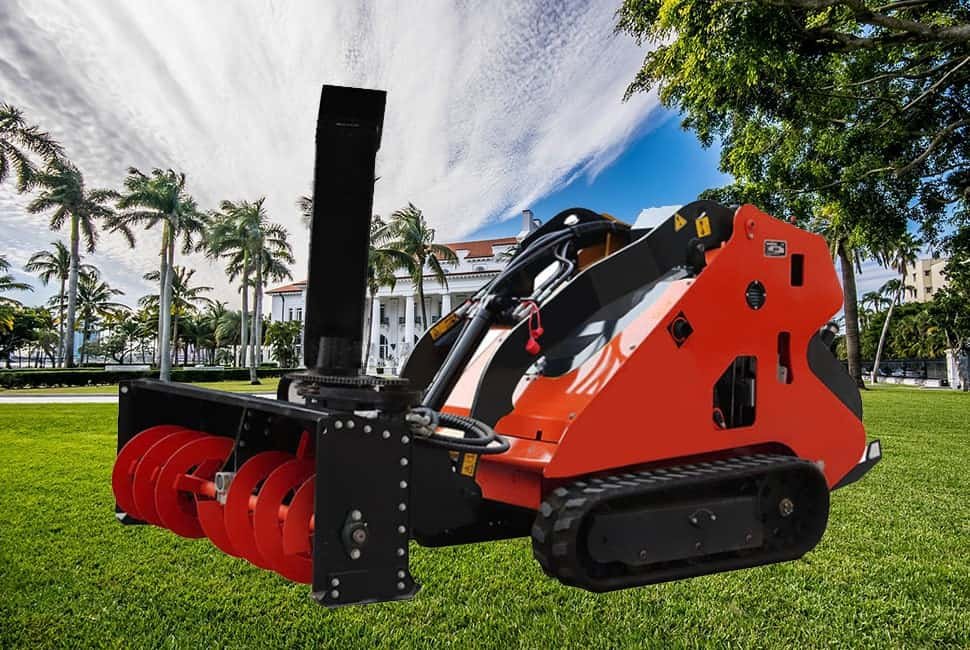Choosing the best new حفارة for your construction needs can be a daunting task. Excavators are a critical piece of equipment for nearly every construction project and with a wide range of models, sizes, and features available, it’s important to make the right decision. Whether you’re digging trenches, lifting heavy materials, or working in tight spaces, selecting the best excavator for the job can have a big impact on the efficiency and cost of your project.As a result, many companies experience wasted time and money, not to mention frustration with their equipment. This can be avoided by taking the time to carefully consider the specific application and needs of your construction project before investing in an excavator.These mistakes can lead to lost time and money, not to mention a lot of frustration with your equipment. The good news is that you can avoid this entire scenario by taking some time to think through what you will be doing with the excavator and what you need it to do for your construction projects.
In this article, we’re going to look at the most important things to think about in order to pick the best new excavator for your construction projects.Choose the right size machine, consider engine power, look at fuel efficiency, think about the hydraulic system and be sure it’s compatible with the attachments you’re going to use. Choosing the right new excavator, based on these factors, will allow you to get more work done at a lower cost.
Now, let’s break down the essential aspects to consider before making a decision.

Determine the Excavator’s Intended Use
Understand what exactly you’re going to be using the excavator for. Is it going to be mainly for excavation work, lifting work, material handling? Are you going to be doing trench work, foundation work, grading work? Identify the primary use. This will help you determine the size of the machine you need, the depth at which you can dig, and the types of attachments for which the excavator has been optimized. An excavator designed to do primarily excavation work is going to be different from an excavator designed mainly for lifting or material handling.
For example, you might need a mini excavator for tight spaces and light excavation work. On the other hand, you may need a large crawler excavator for heavy-duty digging, lifting and earth moving. Know what you want to do.
Consider Horsepower and Engine Capacity
The bigger the motor, more specifically the horsepower, the bigger the engine, the more performance you’re going to get, especially in heavy lifting and heavy digging. It’s going to give you the force you need to deal with difficult materials and difficult working conditions.Make sure the engine has enough power to do what you need it to do, based on where you’re working, the type of material you’re working on, and the work you’re going to be doing. More horsepower in the engine will give you more productivity, especially in trying environments.
If you’re working in rocky soil or need to lift heavy materials, you may need a 100 to 150 horsepower machine. If you’re not doing much, you might be able to get by with a smaller engine, which will use less fuel.
Evaluate the Excavator’s Fuel Efficiency
Fuel costs can add up quickly, especially on bigger projects. Purchasing an excavator with good fuel efficiency can save you a lot of money over the life of the machine.Look for machines with advanced and fuel-efficient engines and hydraulic systems. This will result in lower operating costs and more hours of work before you have to refuel.
Look for excavators with advanced fuel-efficient engines and hydraulic systems. This will result in lower operating costs and more hours of work before you have to refuel.
Check the Excavator’s Hydraulics and Transmission System
The hydraulic system and the transmission play a significant role in the overall performance of an excavator. The stronger the hydraulics, the more power you’re going to have for digging, for lifting, for moving the digging arm around, and that sort of thing. Also, the transmission is how effectively the engine power is transferred to the different functions of the machine.Get a machine that has a good hydraulic system and a good transmission. This will help it to operate nice and smooth and give you the power you need to get the job done. It will also help you avoid downtime from having to repair those systems.
For big, demanding tasks like heavy digging or lifting heavy materials, look for models with advanced hydraulics. These can give you faster cycle times and more lifting capacity. In the case of the transmission, look for automatic systems that can help you save fuel and reduce the workload on the operator.

Inspect the Excavator’s Tires and Track Systems
There are different types of undercarriages, wheeled or tracked. The condition of the tires (on a wheeled unit) or the tracks (on a tracked unit) will also impact the performance of your excavator, particularly if you’ll be working on different types of terrain. Wheeled excavators are great for working on smooth, paved surfaces. Tracked excavators, on the other hand, do better on rough, uneven ground.The type of undercarriage is going to impact the stability, mobility, and the overall performance of the excavator. If you’re working in softer dirt or very rough terrain, you probably want to have a tracked excavator.
Tracked excavators are especially good for muddy or rocky environments. The larger footprint of the tracks helps to distribute the weight more evenly, which reduces the ground pressure and increases stability. Wheeled excavators might be an advantage to you if you’re working on firm ground, or in an urban area, because of their mobility and lower cost.
Review the Excavator’s Maintenance and Repair Costs
A new machine will come with a warranty, but think about the ongoing maintenance and repair costs. Look for models that have easy access to the parts that you’re going to be wearing out. Consider user-friendly diagnostics to help you determine what’s wrong with the machine, and look for long-lasting components.Choose a machine from a brand known for its durability and good service. You have to maintain your excavator regularly to keep it running for a long time.
A machine with readily available parts and a wide-spread service network could save you a lot of money and frustration if your machine breaks down. Also, keep an eye out for extended warranty packages or service packages offered by manufacturers.
Test the Excavator for Comfort and Usability
The comfort of the operator can make a big difference in how much work you get done and how tired people get. A comfortable, easy-to-use enclosed cabin can make a huge difference when working long hours. Look for good seats that adjust, climate control, easy-to-use controls, and good visibility out of the cab.Sit in the operator’s seat and play with all the controls. Make sure everything is easy to reach, easy to understand, and that you can see out of the thing.
Modern equipment provides a lot of benefits. They have nice air conditioned cabs. The seats are adjustable. The joysticks are easier for people to use. Make sure the operator has everything they need to be comfortable for those long hours.

Choosing the best new excavator comes down to understanding what you’re going to use it for, paying attention to the horsepower, understanding the fuel efficiency, looking at the hydraulic system, and making sure the operator’s going to be comfortable. By thinking through these different things, you can end up with a machine that’s going to help you get more work done and minimize your costs over the long term.
WhatsApp For More Detailed Information +86 19315780097


